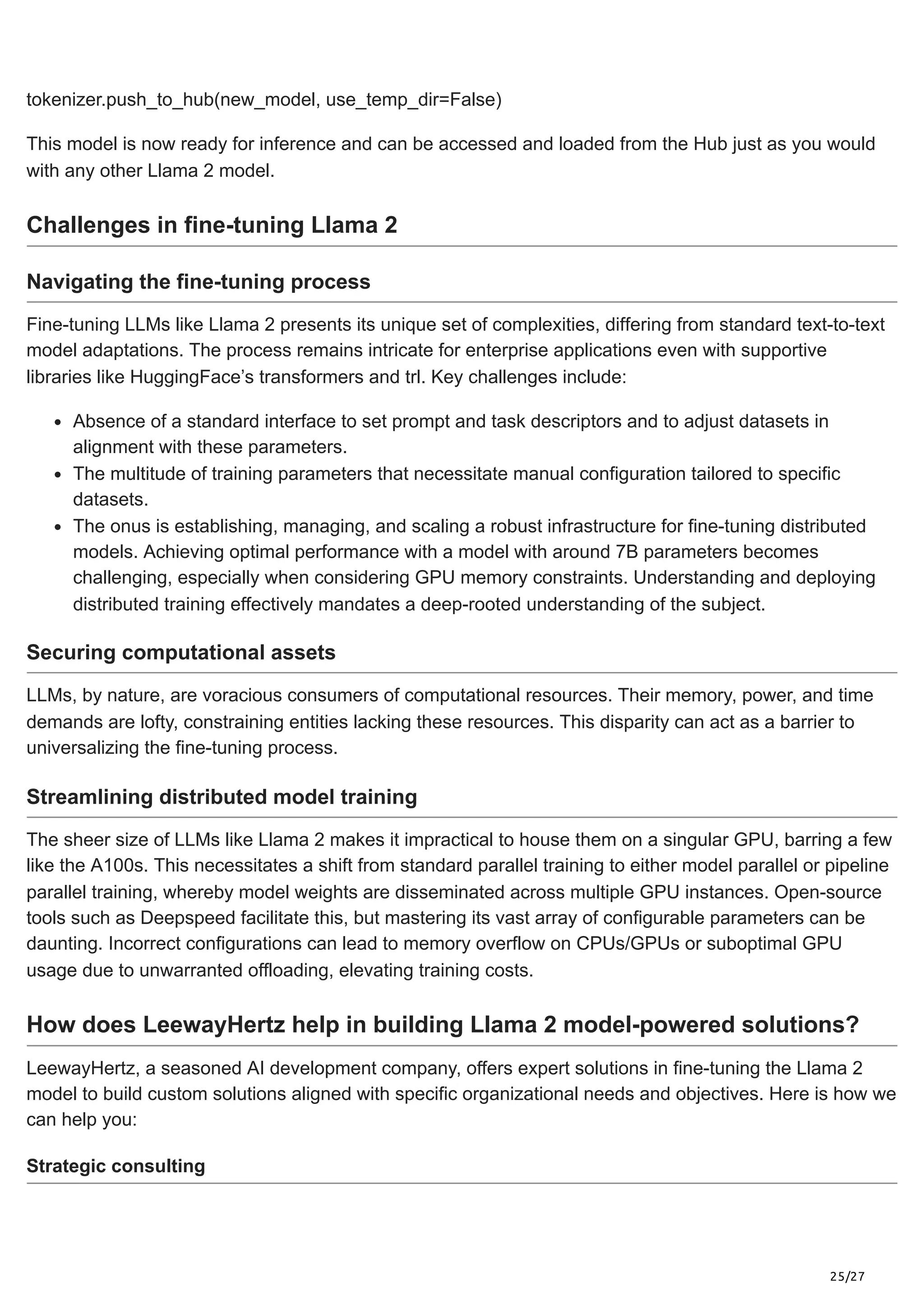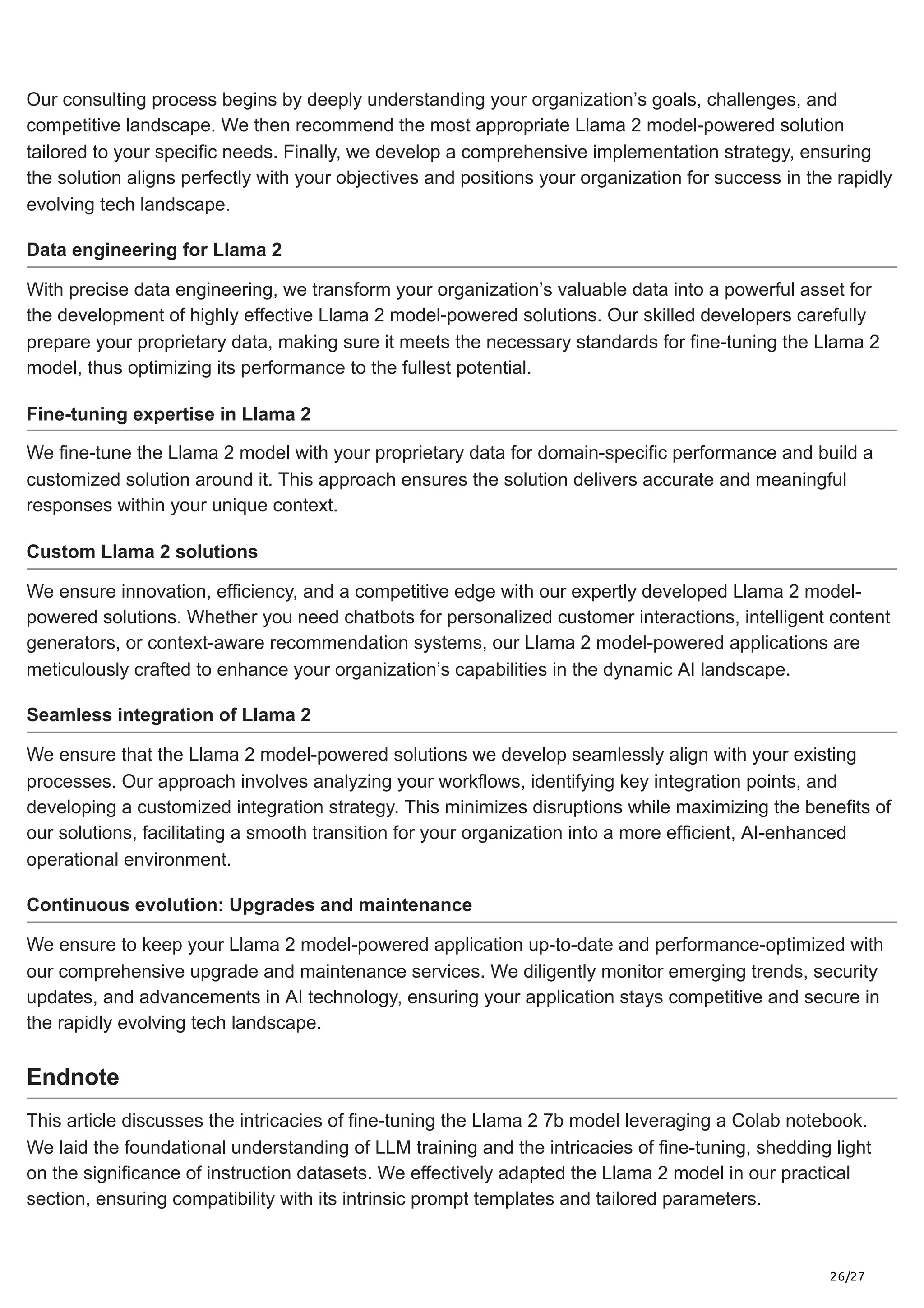This document provides an overview of fine-tuning the Llama 2 large language model (LLM) developed by Meta, emphasizing its advancements and competitive positioning in the AI landscape. Llama 2 is notable for its open-source nature, extensive training on 2 trillion tokens, and improved adaptability for specialized tasks through an innovative fine-tuning process. The article also discusses its foundation in responsible AI development, highlighting transparency and community engagement as central to its operational philosophy.

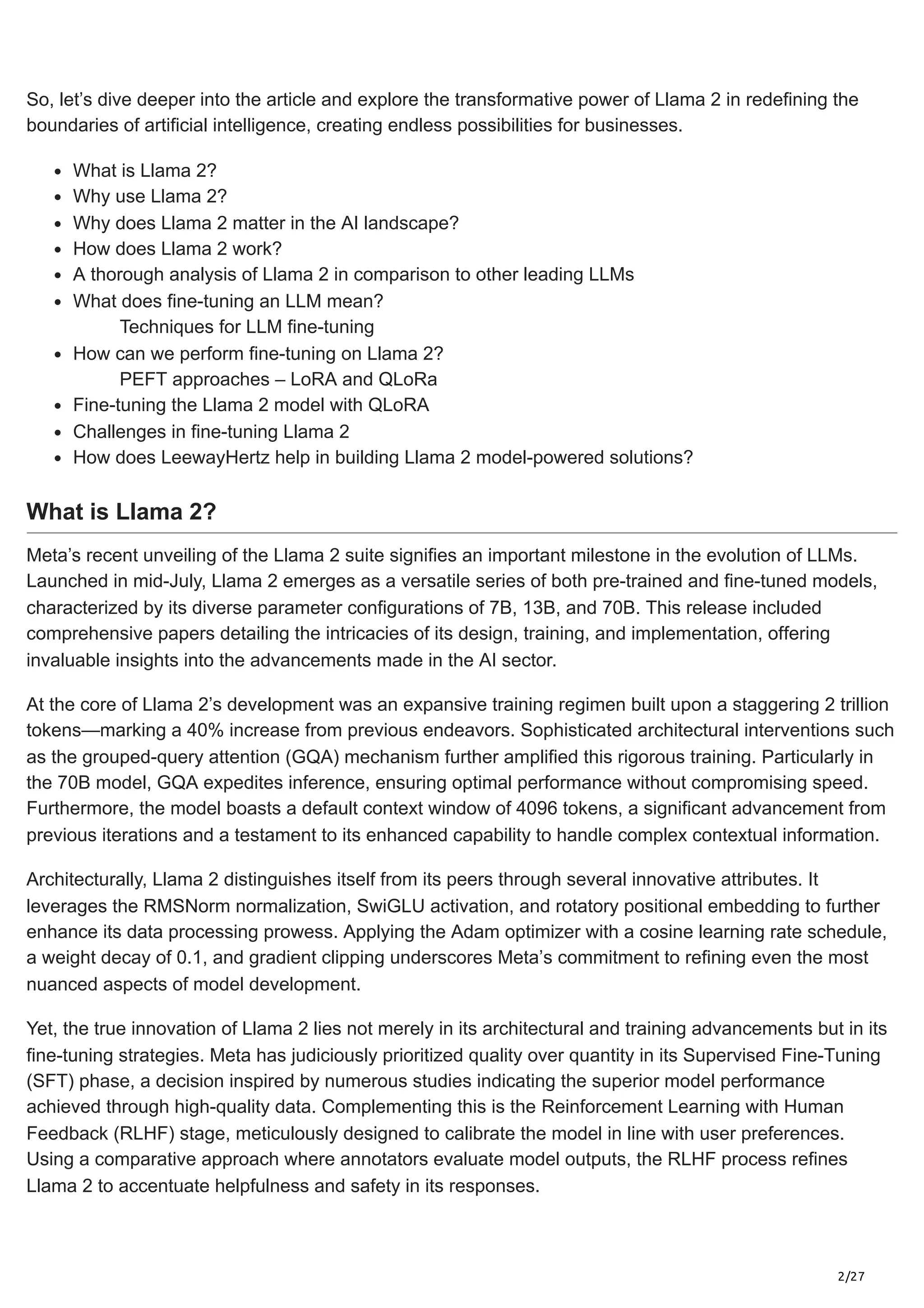
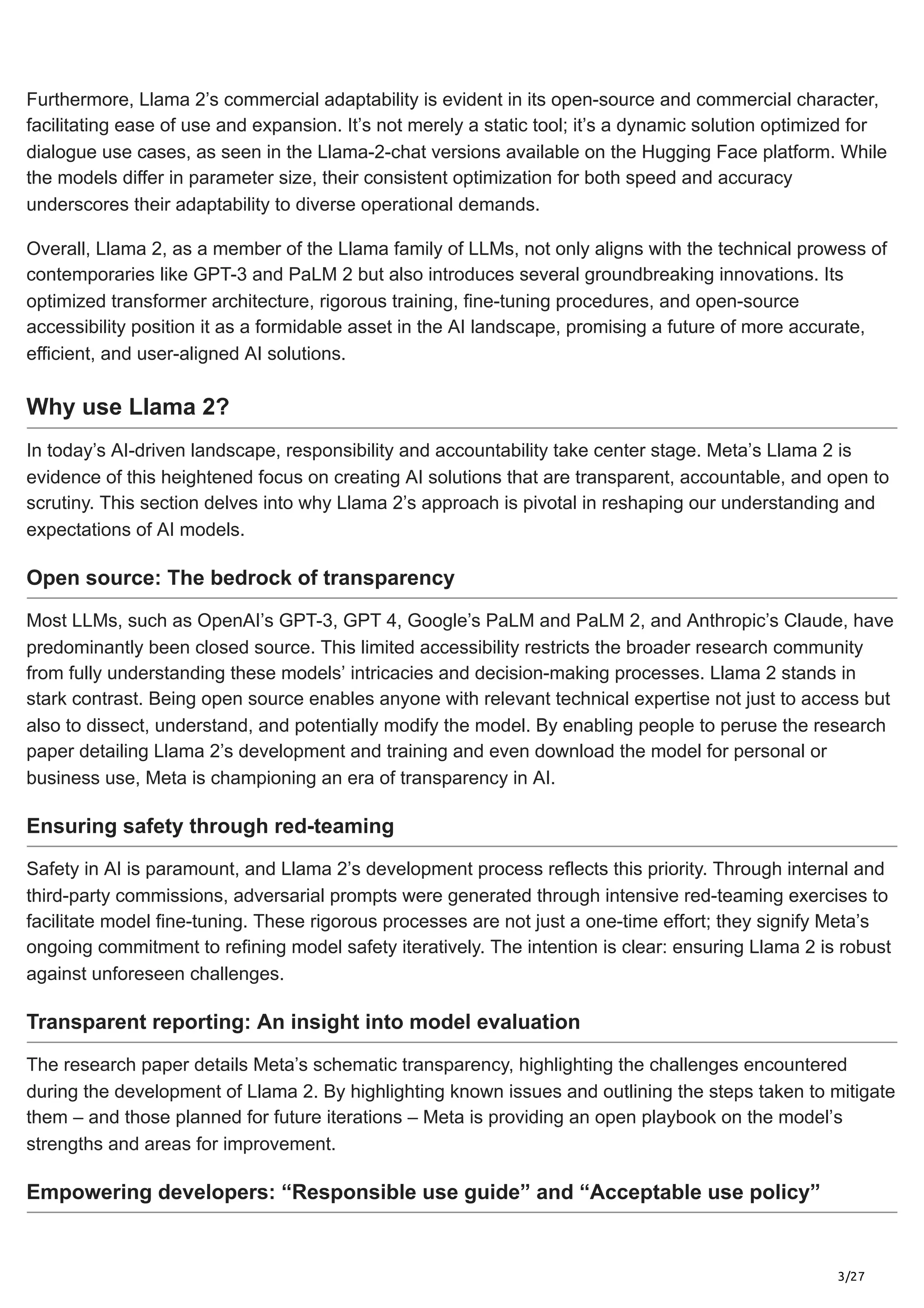
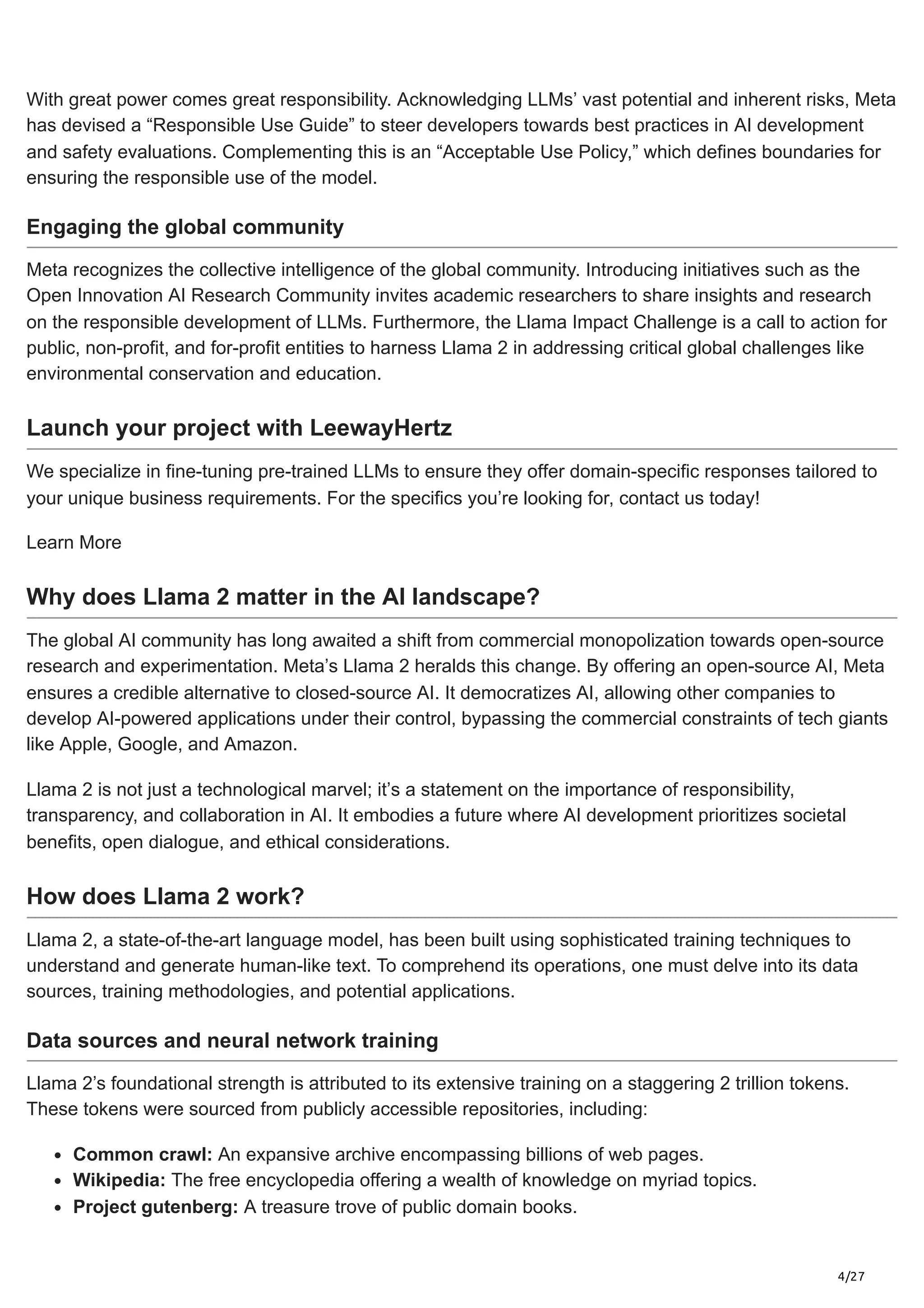
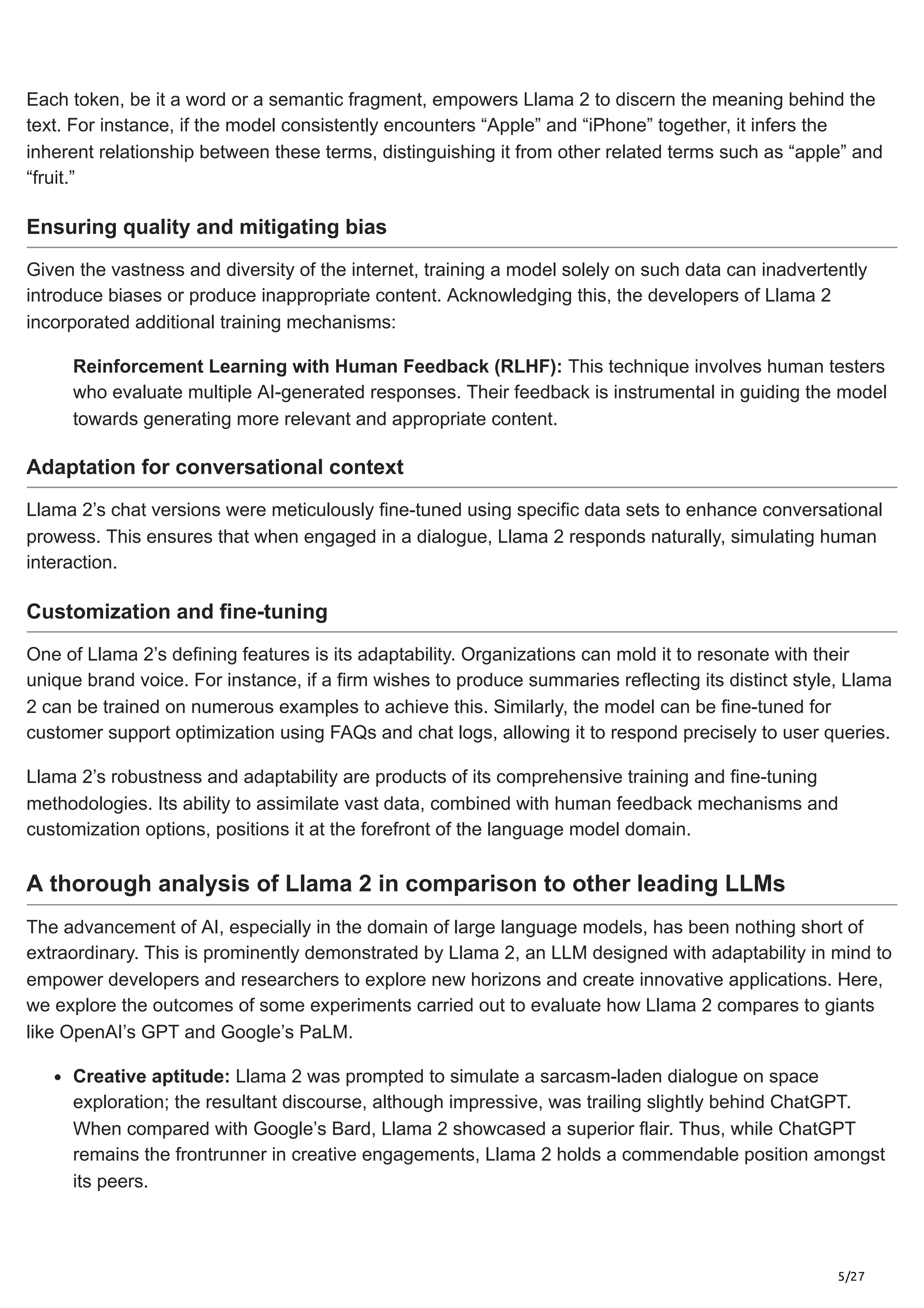
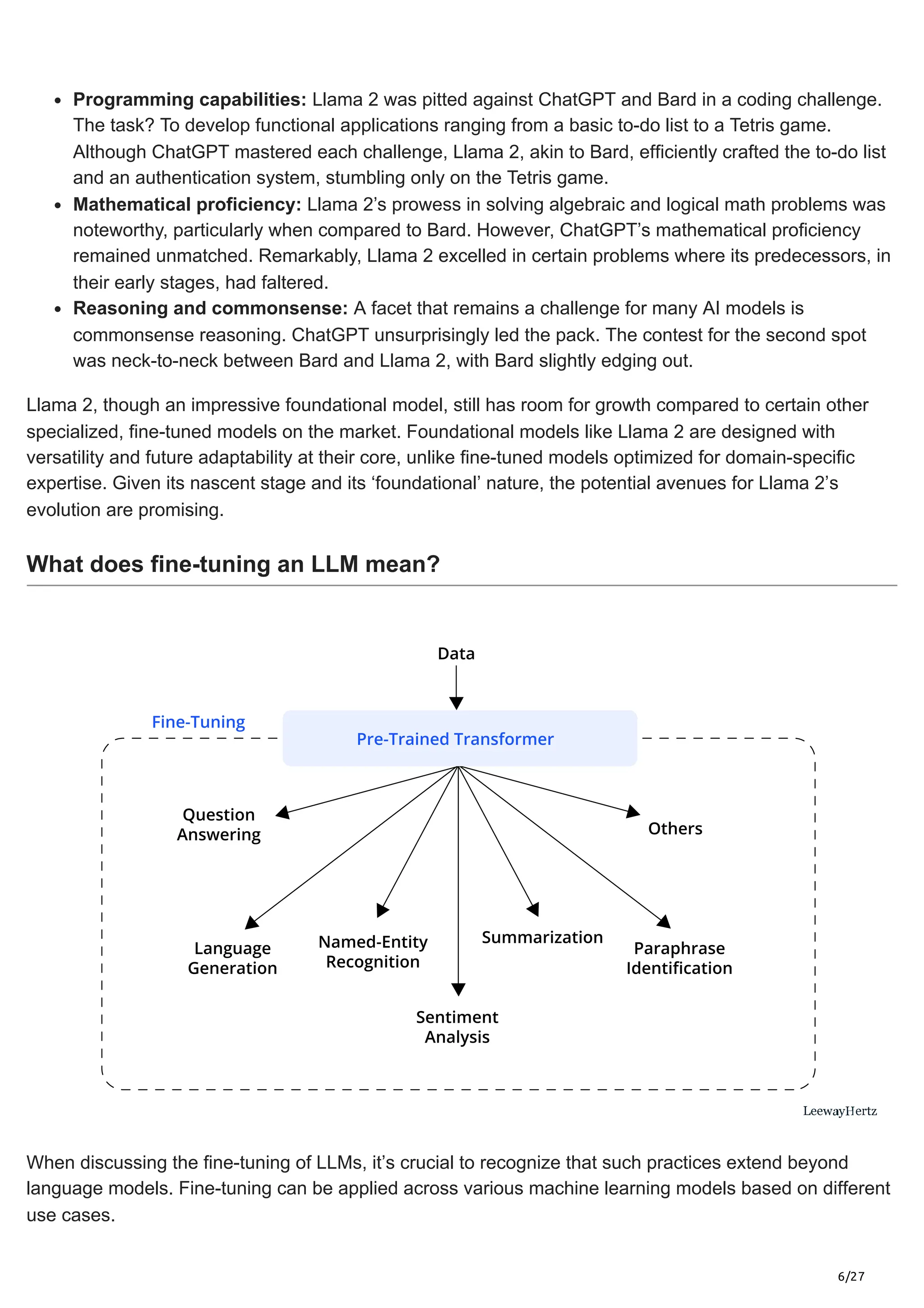

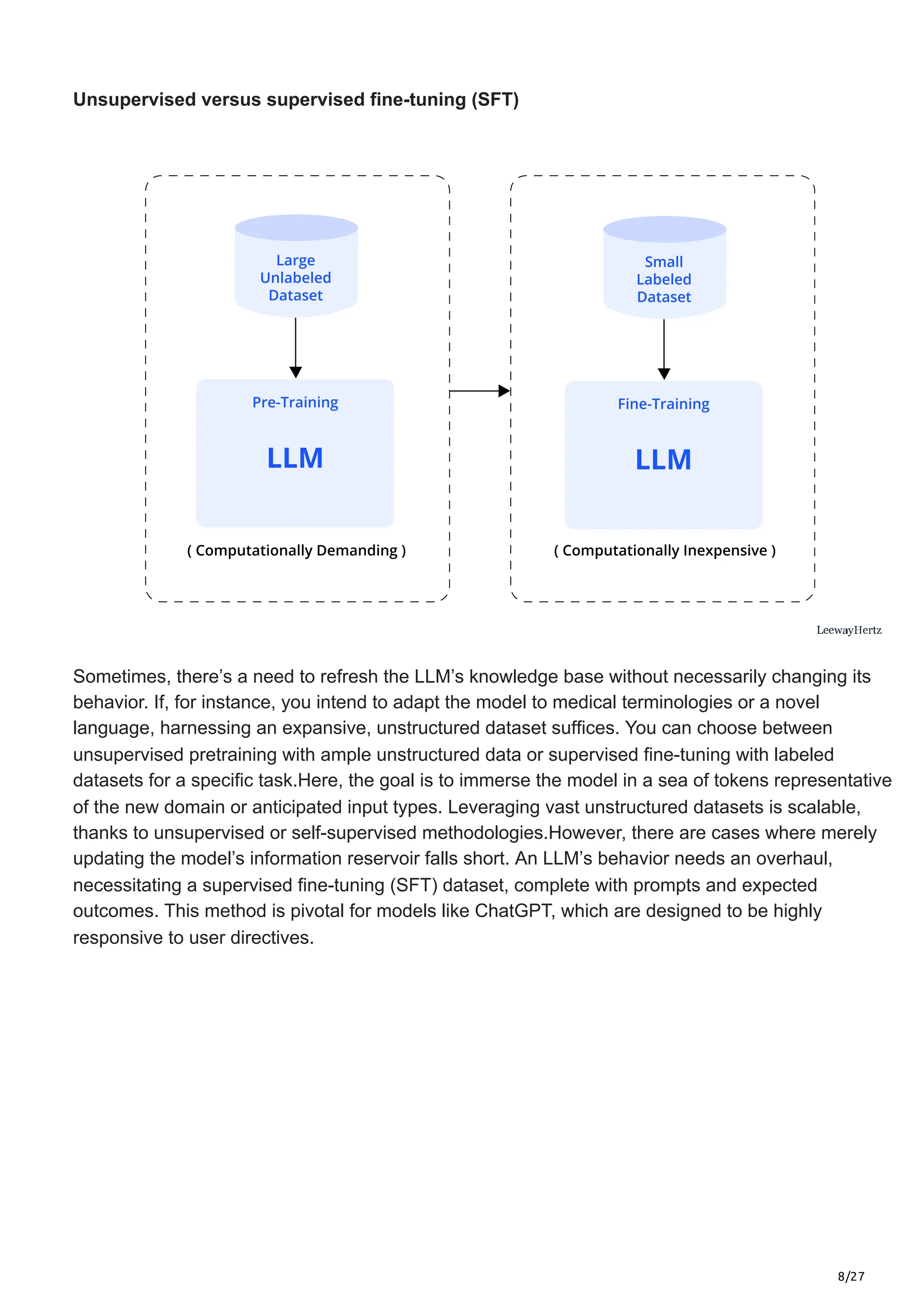
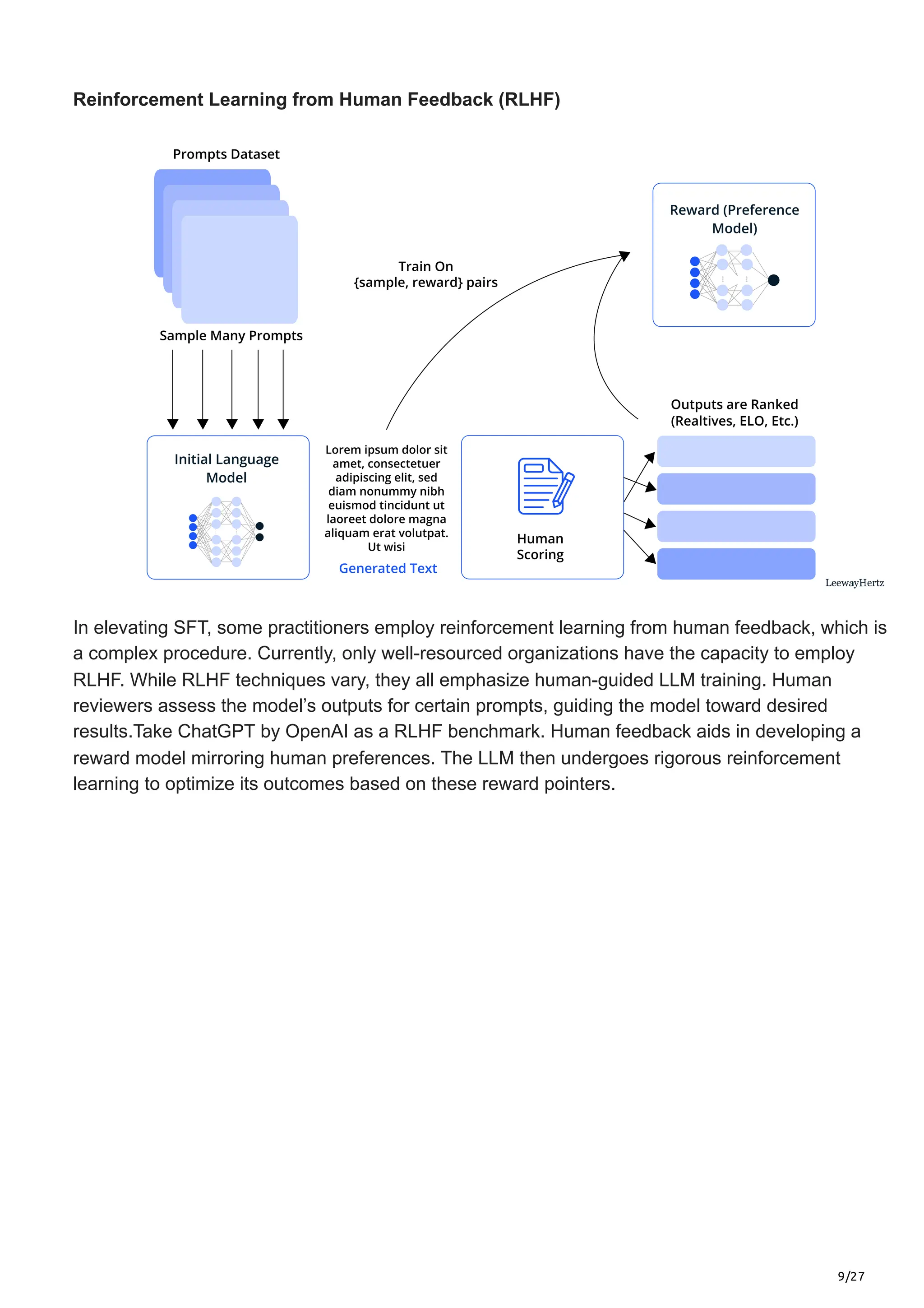
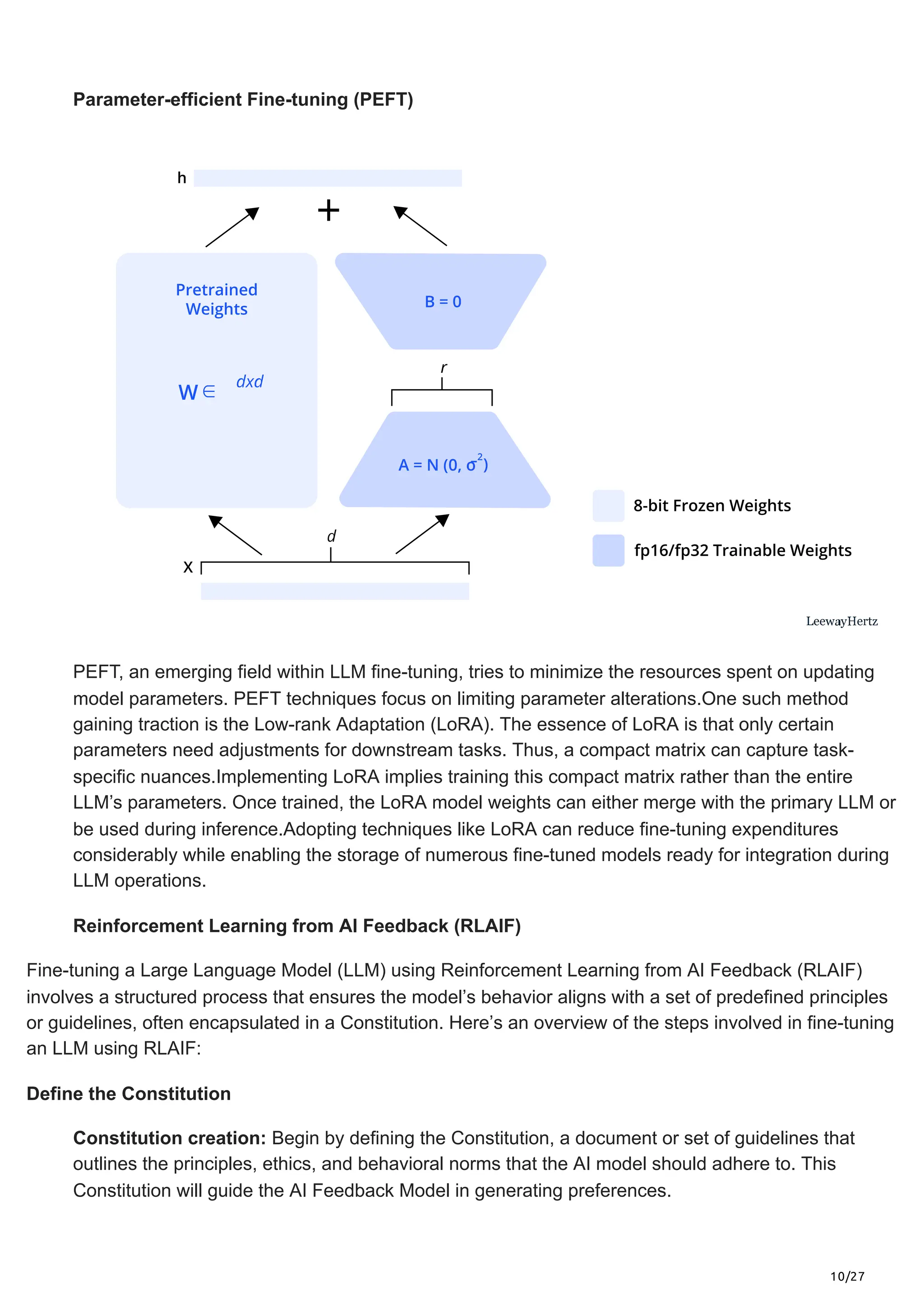

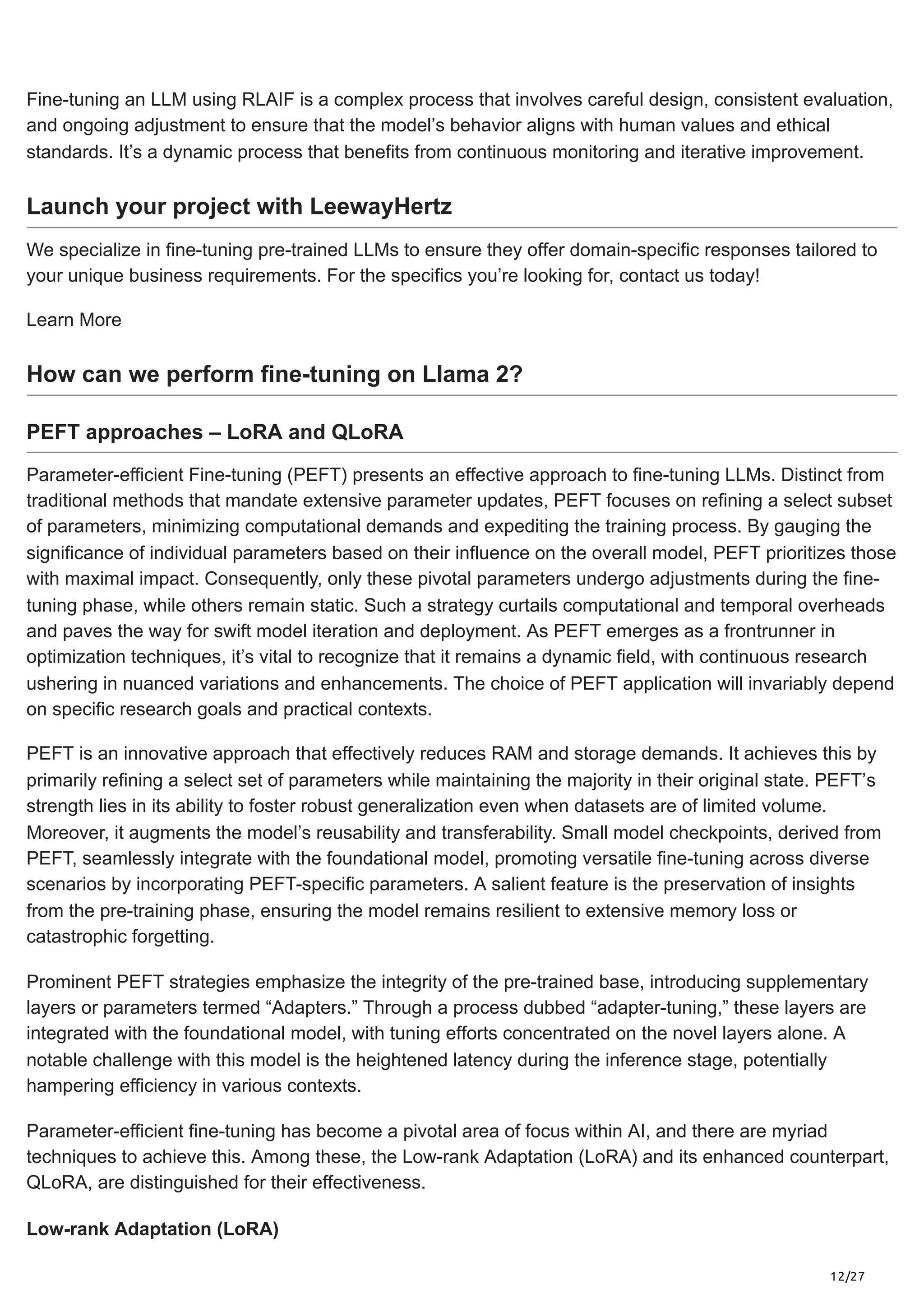
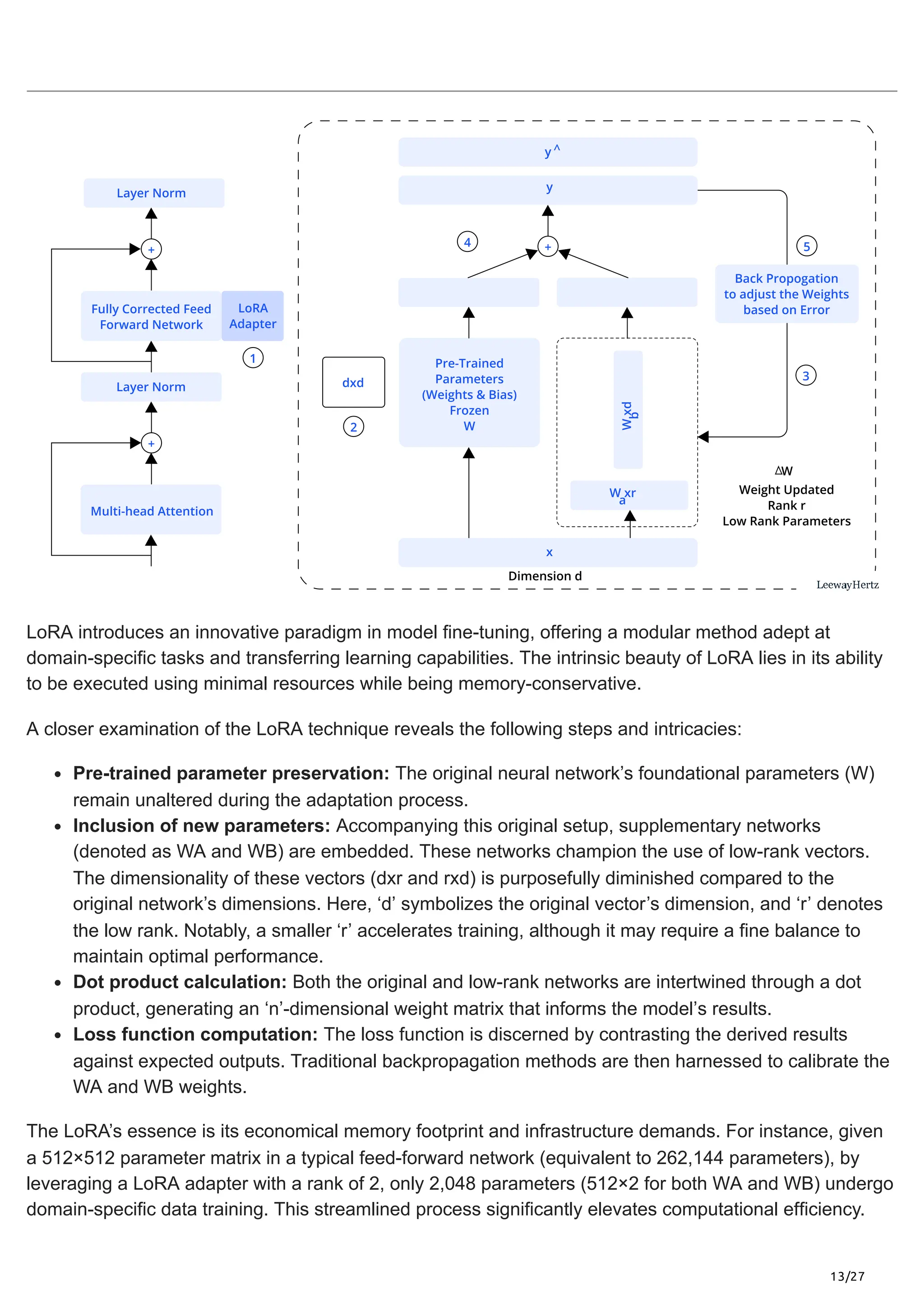
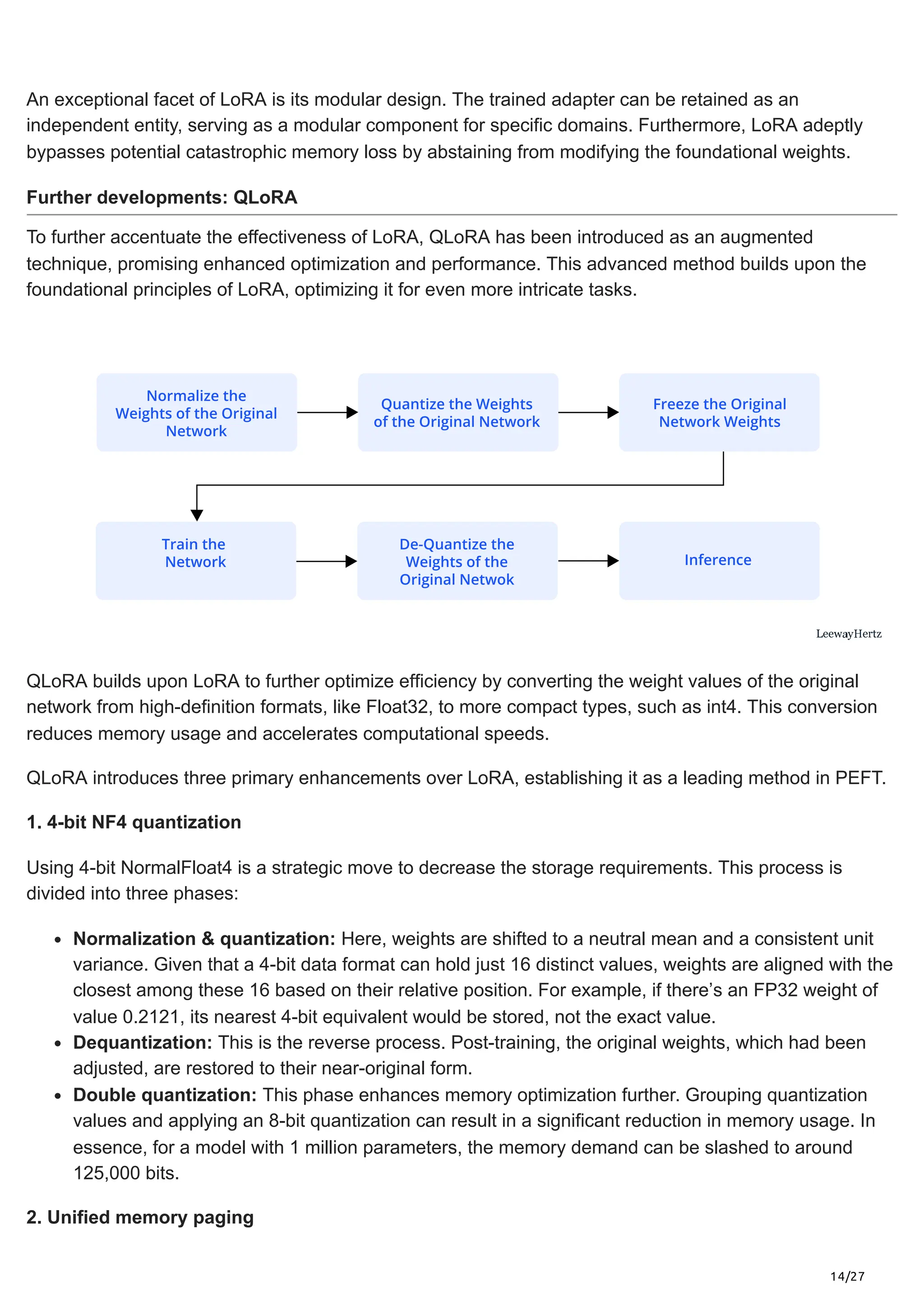
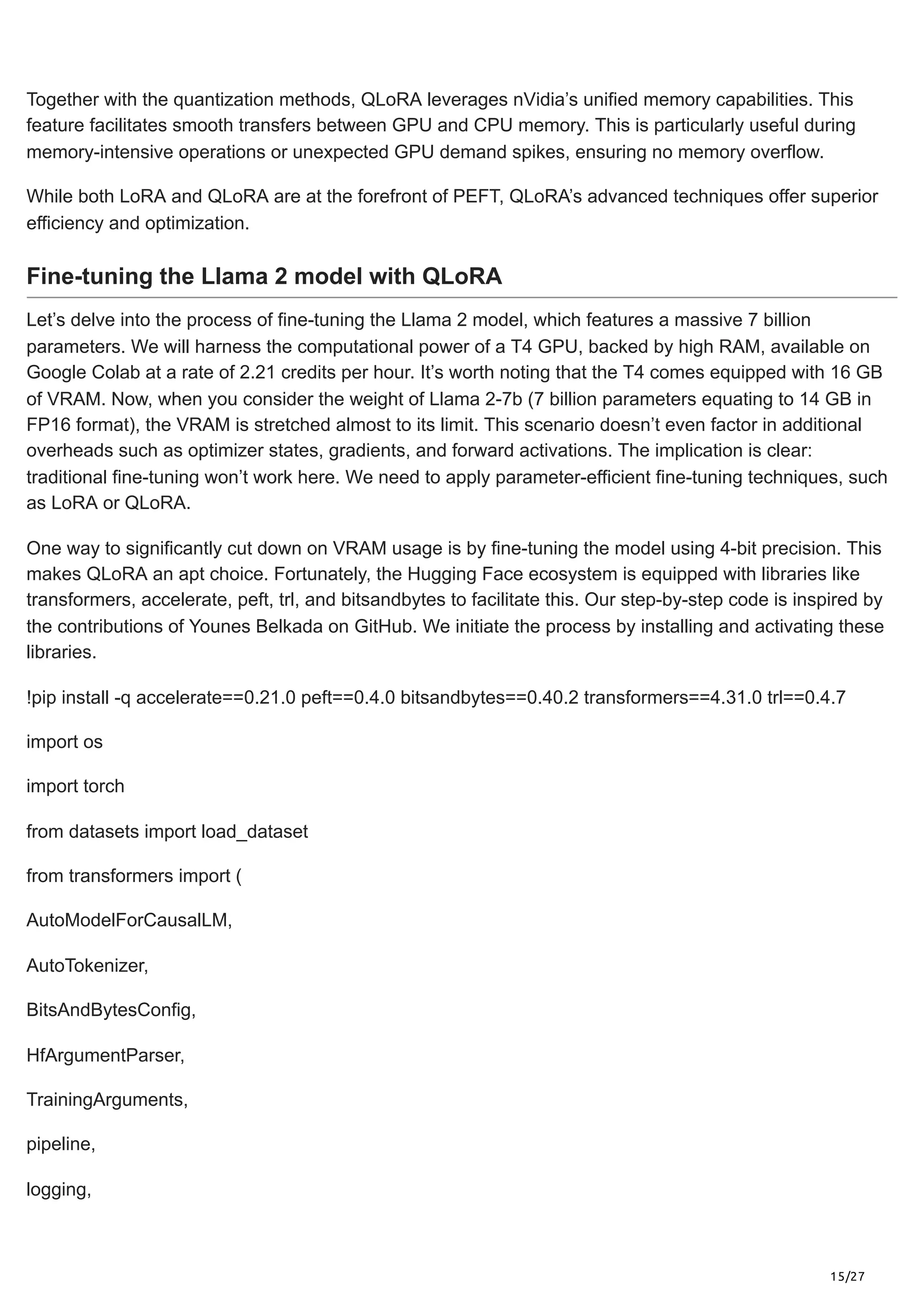

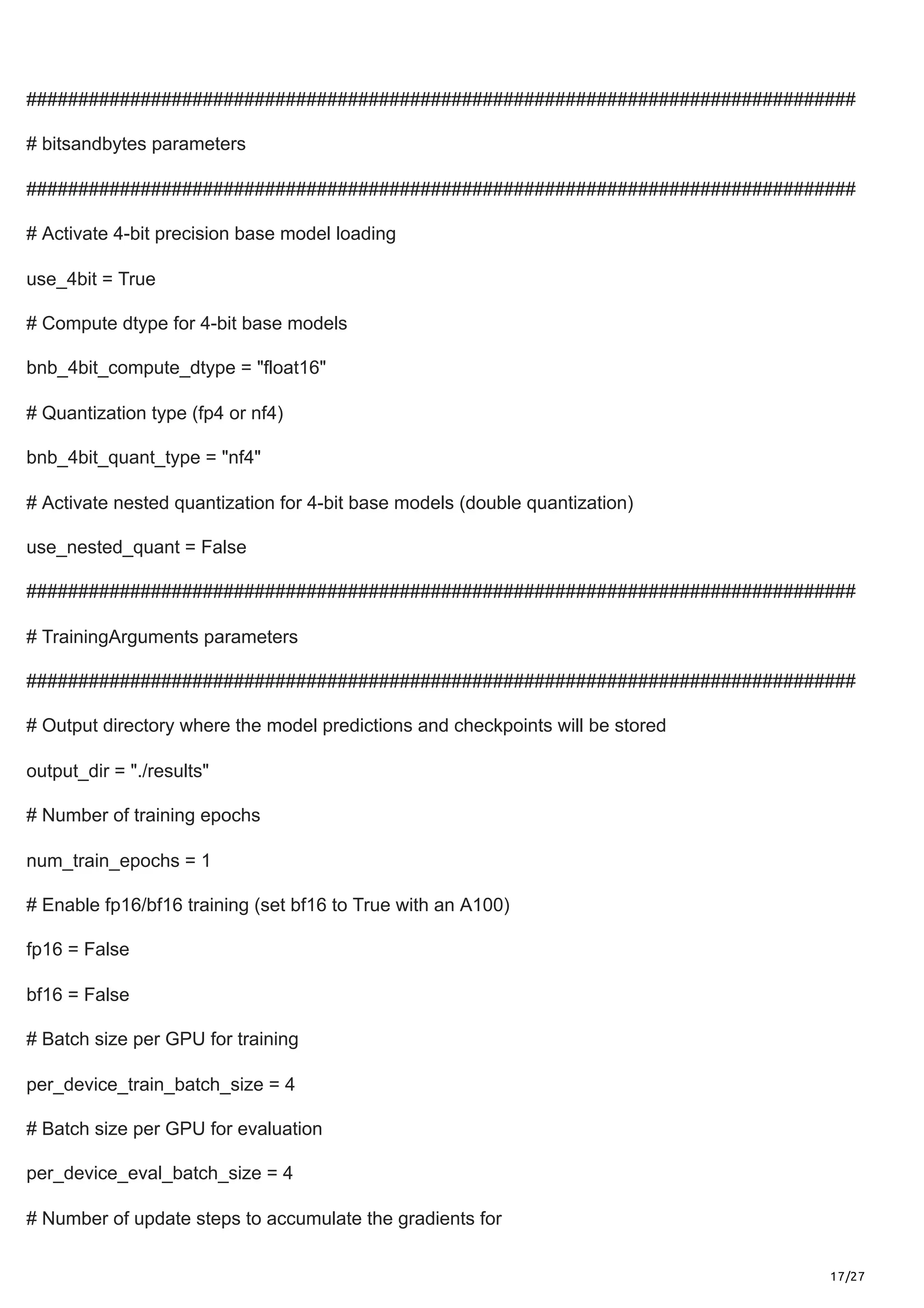
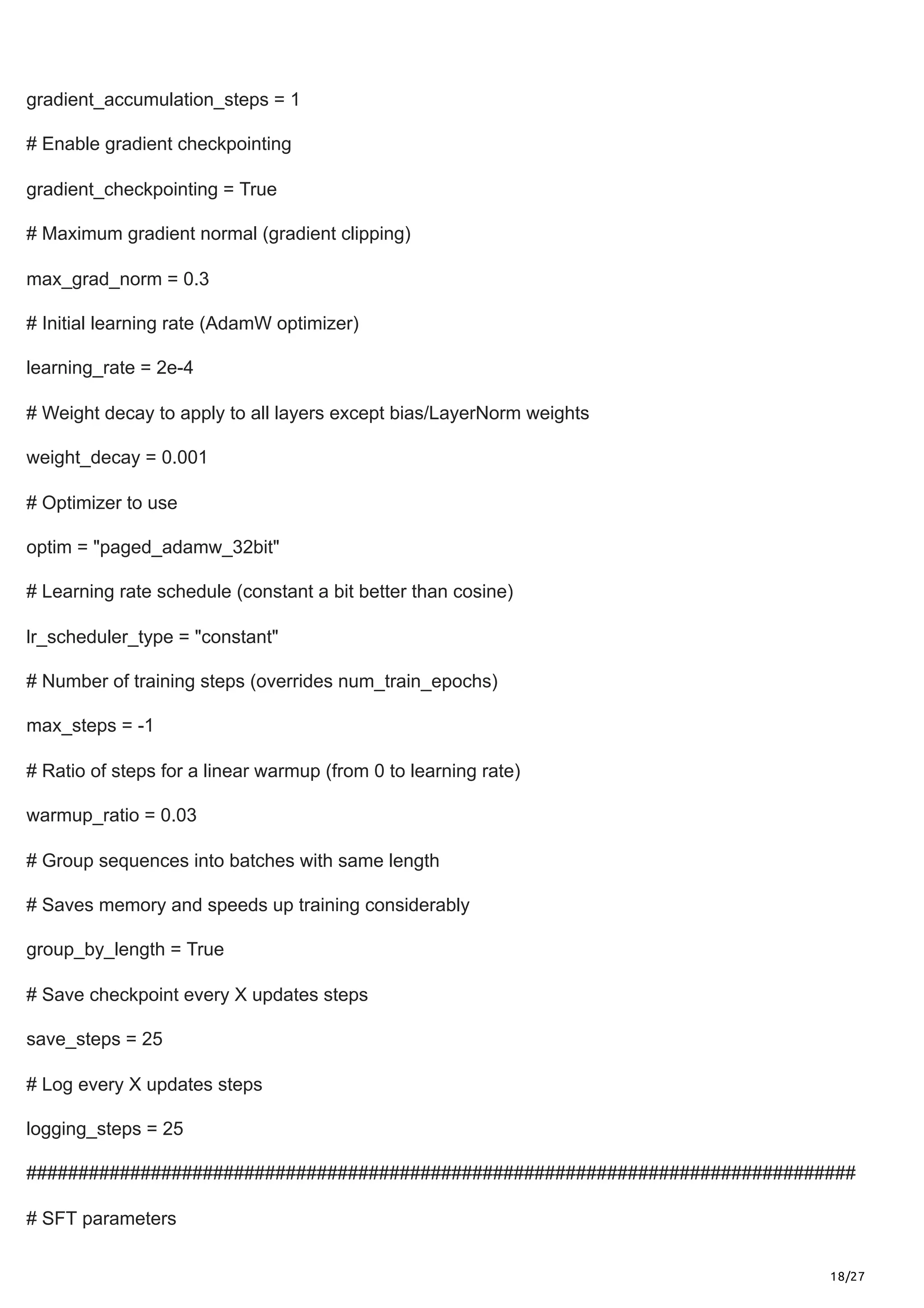
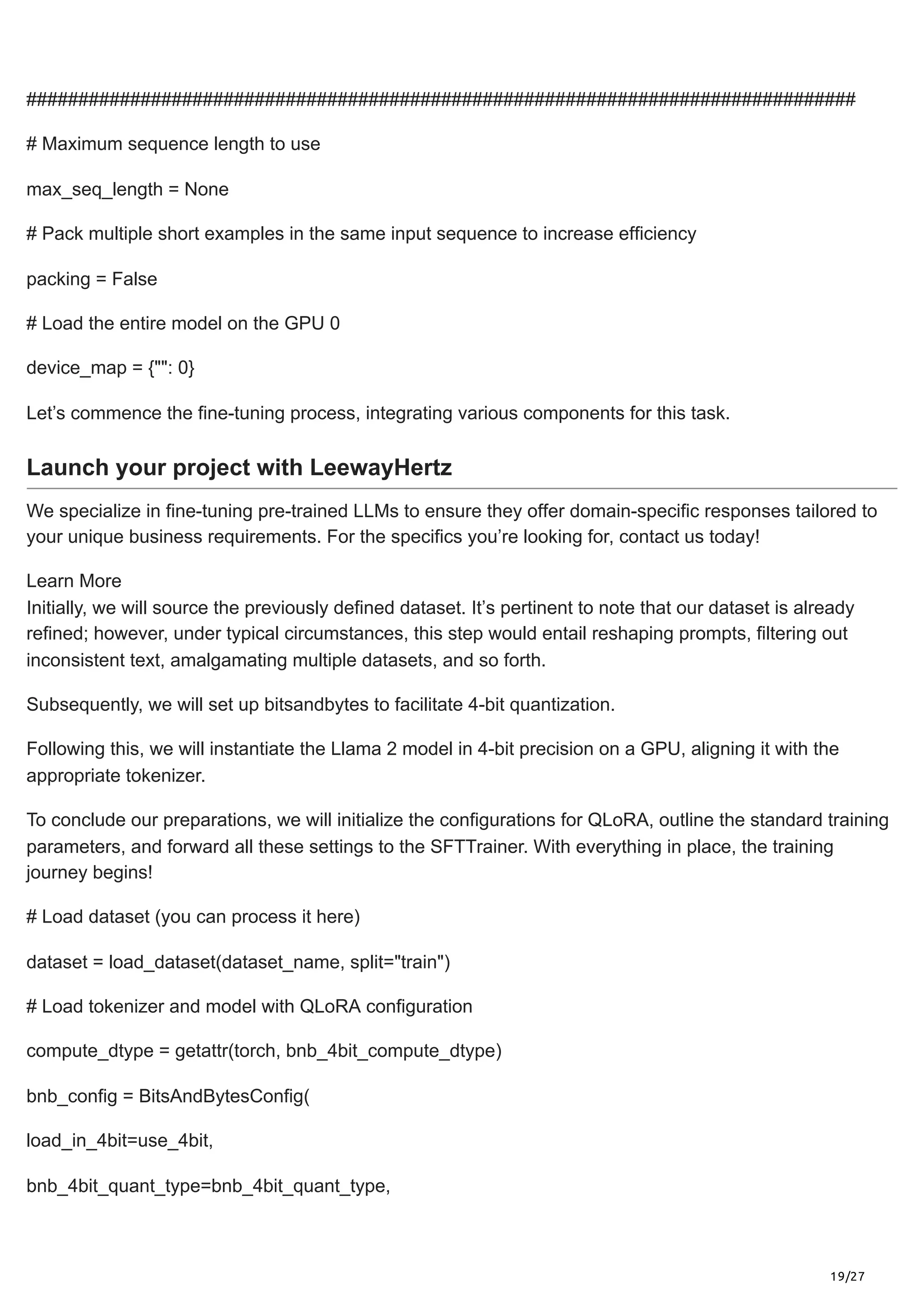
![20/27
bnb_4bit_compute_dtype=compute_dtype,
bnb_4bit_use_double_quant=use_nested_quant,
)
# Check GPU compatibility with bfloat16
if compute_dtype == torch.float16 and use_4bit:
major, _ = torch.cuda.get_device_capability()
if major >= 8:
print("=" * 80)
print("Your GPU supports bfloat16: accelerate training with bf16=True")
print("=" * 80)
# Load base model
model = AutoModelForCausalLM.from_pretrained(
model_name,
quantization_config=bnb_config,
device_map=device_map
)
model.config.use_cache = False
model.config.pretraining_tp = 1
# Load LLaMA tokenizer
tokenizer = AutoTokenizer.from_pretrained(model_name, trust_remote_code=True)
tokenizer.add_special_tokens({'pad_token': '[PAD]'})
tokenizer.pad_token = tokenizer.eos_token
tokenizer.padding_side = "right"
# Load LoRA configuration
peft_config = LoraConfig(
lora_alpha=lora_alpha,](https://image.slidesharecdn.com/fine-tuningllama2anoverview-240219064119-0a7baf3a/75/FINE-TUNING-LLAMA-2-DOMAIN-ADAPTATION-OF-A-PRE-TRAINED-MODEL-20-2048.jpg)
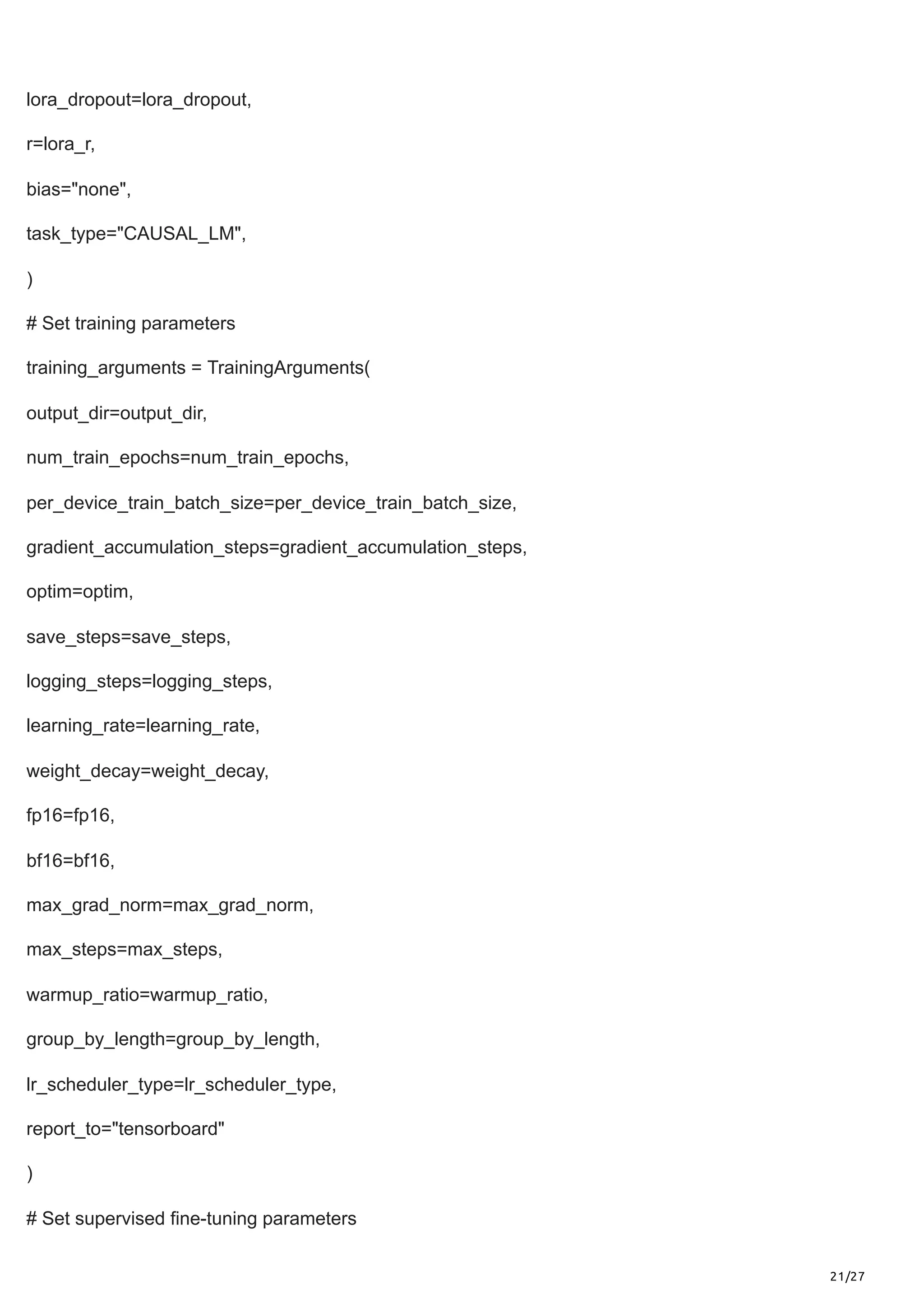

![23/27
%load_ext tensorboard
%tensorboard --logdir results/runs
Let’s confirm that the model is operating as expected. While a comprehensive evaluation would be ideal,
we can utilize the text generation pipeline for preliminary assessments by posing questions such as,
“What is a large language model?” It’s crucial to adjust the input to align with Llama 2’s prompt structure.
# Ignore warnings
logging.set_verbosity(logging.CRITICAL)
# Run text generation pipeline with our next model
prompt = "What is a large language model?"
pipe = pipeline(task="text-generation", model=model, tokenizer=tokenizer, max_length=200)
result = pipe(f"[INST] {prompt} [/INST]")
print(result[0]['generated_text'])
The model provides the subsequent answer:
/usr/local/lib/python3.10/dist-packages/transformers/generation/utils.py:1270: UserWarning: You have
modified the pretrained model configuration to control generation. This is a deprecated strategy to control
generation and will be removed soon, in a future version. Please use a generation configuration file (see
https://huggingface.co/docs/transformers/main_classes/text_generation )
warnings.warn(
/usr/local/lib/python3.10/dist-packages/torch/utils/checkpoint.py:31: UserWarning: None of the inputs
have requires_grad=True. Gradients will be None
warnings.warn("None of the inputs have requires_grad=True. Gradients will be None")
INST] What is a large language model? [/INST] A large language model is a type of artificial intelligence
(AI) model that is trained on a large dataset of text to generate human-like language outputs. It is
designed to be able to understand and generate text in a way that is similar to human language, and can
be used for a variety of applications such as chatbots, language translation, and text summarization.
Large language models are typically trained using deep learning techniques, such as recurrent neural
networks (RNNs) or transformer models, and are often based on pre-trained models such as BERT or
RoBERTa. These models are trained on large datasets of text, such as books, articles, or websites, and
are designed to learn the patterns and structures of language.
Some examples of large language models include:
* BERT (Bidirectional Encoder Representations from Transformers):](https://image.slidesharecdn.com/fine-tuningllama2anoverview-240219064119-0a7baf3a/75/FINE-TUNING-LLAMA-2-DOMAIN-ADAPTATION-OF-A-PRE-TRAINED-MODEL-23-2048.jpg)
![24/27
Drawing from our observations, the coherence demonstrated by a model encompassing merely 7 billion
parameters is quite impressive. Feel free to experiment further by posing more complex questions,
perhaps drawing from datasets like BigBench-Hard. Historically, the Guanaco dataset has been pivotal in
crafting top-tier models. To achieve this, consider training a Llama 2 model utilizing the
mlabonne/guanaco-llama2 dataset.
So, how do we save our refined llama-2-7b-miniguanaco model? The key lies in integrating the LoRA
weights with the foundational model. Presently, a direct, seamless method to achieve this eludes us. The
procedure involves reloading the base model in FP16 precision and harnessing the capabilities of the peft
library for amalgamation. Regrettably, this approach has occasionally been met with VRAM-related
challenges, even after its clearance. It might be beneficial to restart the notebook, initiate the primary
three cells, and then progress to the subsequent one.
# Reload model in FP16 and merge it with LoRA weights
base_model = AutoModelForCausalLM.from_pretrained(
model_name,
low_cpu_mem_usage=True,
return_dict=True,
torch_dtype=torch.float16,
device_map=device_map,
)
model = PeftModel.from_pretrained(base_model, new_model)
model = model.merge_and_unload()
# Reload tokenizer to save it
tokenizer = AutoTokenizer.from_pretrained(model_name, trust_remote_code=True)
tokenizer.add_special_tokens({'pad_token': '[PAD]'})
tokenizer.pad_token = tokenizer.eos_token
tokenizer.padding_side = "right"
Having successfully combined our weights and reinstated the tokenizer, we are positioned to upload the
entirety to the Hugging Face Hub, ensuring our model’s preservation.
!huggingface-cli login
model.push_to_hub(new_model, use_temp_dir=False)](https://image.slidesharecdn.com/fine-tuningllama2anoverview-240219064119-0a7baf3a/75/FINE-TUNING-LLAMA-2-DOMAIN-ADAPTATION-OF-A-PRE-TRAINED-MODEL-24-2048.jpg)
